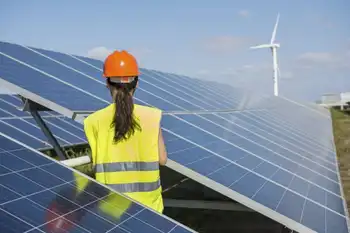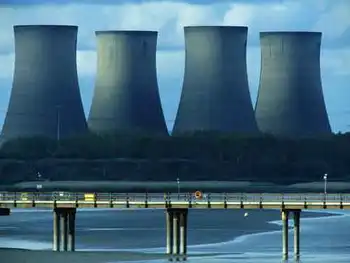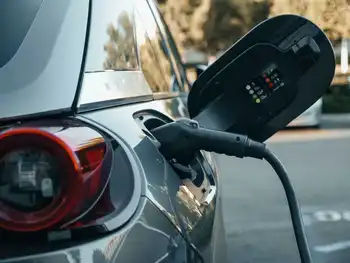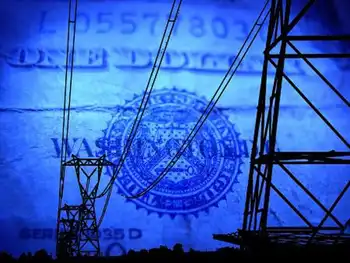BC Hydro electricity system is ‘maxed out’
B.C. will be in that situation "for the next several years" according to documents recently submitted to the B.C. Utilities Commission.
This situation illustrates how the flaws and risks of failure in BC Hydro's aging electricity system don't stop with the faulty cable splices that blacked out downtown Vancouver recently.
The entire system, every bit of it, from the dams that capture water to generate power, to the wires distributing electricity to people's homes, is maxed out.
Or, in the words of the Crown corporation itself, "BC Hydro is facing capacity constraints in all parts of its system."
Recent Hydro filings with BCUC state that the B.C. electricity grid is "significantly exposed" to the risk that Hydro won't have enough power in the system when four million residents flick on lights, furnaces and other appliances on the coldest, darkest days of the winters ahead.
So far, there's no indication that Hydro's overall ability to deliver electricity is fading to black.
In spite of a blackout in Vancouver's core business and tourism district for up to three days this week, the reliability of service is comparable to other North American jurisdictions, according to internationally established performance measures.
Nonetheless, it's clear from the documents that the Crown corporation's dedicated corps of electrical engineers and linemen will be holding their breath when the mercury drops, and counting on steady performance from hydroelectric facilities that are already showing signs of age.
Remedies are years away. Hydro and its critics acknowledge that chronic under-spending on the system in the 1990s, and a lack of recruitment of electrical line workers and engineers all the way back to the early 1980s, make it difficult to catch up.
Last year, for example, "inadequate long-term planning" left BC Hydro with a "skill shortage" that forced it to forego $105 million worth of system improvement projects because it didn't have enough workers to carry out of all the work it planned.
New independent power facilities are not the answer. They offer intermittent production that is not reliable enough to serve baseline needs in crucial situations.
Other potential sources such as Burrard Thermal and Columbia Treaty power require advance scheduling and force Hydro into an iffy situation where it must bet, in advance, how much power people will use the following day.
Reliance on market-priced power imports from the U.S. isn't just expensive, it's also in conflict with orders from the provincial government to make B.C. self-sufficient in electricity by 2016. Moreover, Hydro notes, the power lines themselves already run at capacity in winter, particularly along border connections.
Hydro is proposing to spend $3.4 billion by 2010 - paid for by customers through a 15-per-cent rate increase over two years - to begin to "renew and upgrade" its dams, generating stations and the complex system of wires that distribute power to customers. That won't be enough to overcome the strains on a system that has not had a major expansion since 1984.
Hydro thinks paying big industrial users to shut down will leave enough room in the system to meet sudden spikes in demand. Documents show that without the industrial "load curtailment" program, there is only a 55-to-60-per-cent likelihood that Hydro will have electricity to spare at peak times this winter.
That means 40 to 45 per cent of the time, the system will run flat out.
That is far from Hydro's ideal. Its "operational planning criteria" target is to have surplus power at least 90 per cent of the time.
The industrial program already exists in a scaled-down version on Vancouver Island, where the possibility of blackouts has already been raised in the absence of new high-voltage cables to bring more power from the mainland.
The new cable route is mostly built, save for a controversial section through Tsawwassen that continues to meet vigorous opposition from some residents.
A spokesman for industrial users said in an interview he sees no problem in his members striking accords with Hydro. But even so, there are substantial challenges. In March 2008 for example, one of the turbines at Shrum Generating Station on the Peace River - the largest hydroelectric station in the province - suffered what engineers describe as a "catastrophic failure" and is out of commission for a year. Four others on the same bank of turbines are showing similar symptoms of stress, and all have been in service since the 1960s.
"Aging infrastructure, if not adequately maintained or replaced when conditions warrant, can have a profound effect on the safety and reliability of the electric system," Hydro states in its revenue requirements application to the BCUC.
Hydro president and CEO Bob Elton said in an interview this week the Shrum unit failure "is not going to affect our reliability" and he says Hydro is "accelerating" its expenditures on the system.
"If you see the condition of (Hydro assets) deteriorating, and you see the demands on them increasing, which is what we see, then we know we need to invest."
Elton noted that Hydro is preparing to add almost 2,000 megawatts of new generating capacity, almost 20 per cent more than what Hydro has at present.
Hydro looks to add two additional generators at Revelstoke and two at Mica, the second- and third-largest hydroelectric facilities in the province.
"We feel strongly that these are necessary investments," Elton said. "We need to pass on to the next generation a system that's better equipped for the demands of our modern life."
By 2010, Hydro proposes to spend $1.7 billion in a single year, compared to $412 million in 2001, the year the BC Liberal Party took power.
The construction of new generating assets, as well as new high voltage transmission and lower voltage distribution lines, is projected to alleviate the current squeeze.
But Hydro warns that in the meantime, "the system remains significantly exposed to risks" including delays in construction at Revelstoke and Mica, and delays in maintenance work on broken units, such as the failed turbine at Shrum.
B.C. energy sector commentator David Austin, who expressed alarm in 2000 about Hydro's apparent failure to spend enough money to maintain its system, said one of the largest challenges is simply getting the refurbishment of the system underway.
The lead time to purchase a new turbine is measured in years, not weeks or months, for example.
"There was under-spending in the 1990s, but you can't suddenly turn the tap on and correct the problem overnight," Austin said.
"It's like jump-starting a car. It takes a while to get it moving."
Dan Potts, executive director of the Joint Industry Electricity Steering Committee, which represents the interests of large industrial customers of BC Hydro, said he doesn't perceive this week's three-day blackout in downtown Vancouver as a symptom of any looming system failure.
"We're not dissatisfied with the level of reliability we typically receive from BC Hydro," Potts said. "Now, if I was in downtown Vancouver and lost a freezer full of food, I don't know what I'd think.
"BC Hydro does need to build some new infrastructure, without question."
Gwenne Farrell, president of Canadian Office and Professional Employees Local 378, representing Hydro inside workers, said her members remain concerned that the provincial government's priority remains the expansion of private-sector power rather than fixing the grid.
"If you look at BC Hydro's own application to the BCUC for their revenue requirement, the largest amount of the rate increase they are going for is energy purchases from private producers, not the maintenance of the infrastructure. You have to question how that is appropriate," Farrell said in an interview.
Related News

New York and New England Need More Clean Energy. Is Hydropower From Canada the Best Way to Get it?
MAINE - As the sole residents of unorganized territory T5 R7 deep within Maine's North Woods, Duane Hanson and his wife, Sally Kwan, have watched the land around them—known for its natural beauty, diverse wildlife and recreational fishing—transformed by decades of development.
But what troubles them most is what could happen in the next few months. State and corporate officials are pushing for construction of a 53-mile-long power line corridor cutting right through the woods and abutting the wild lands surrounding Hanson's property.
If its proponents succeed, Hanson fears the corridor may represent the beginning of the end of his ability to…





